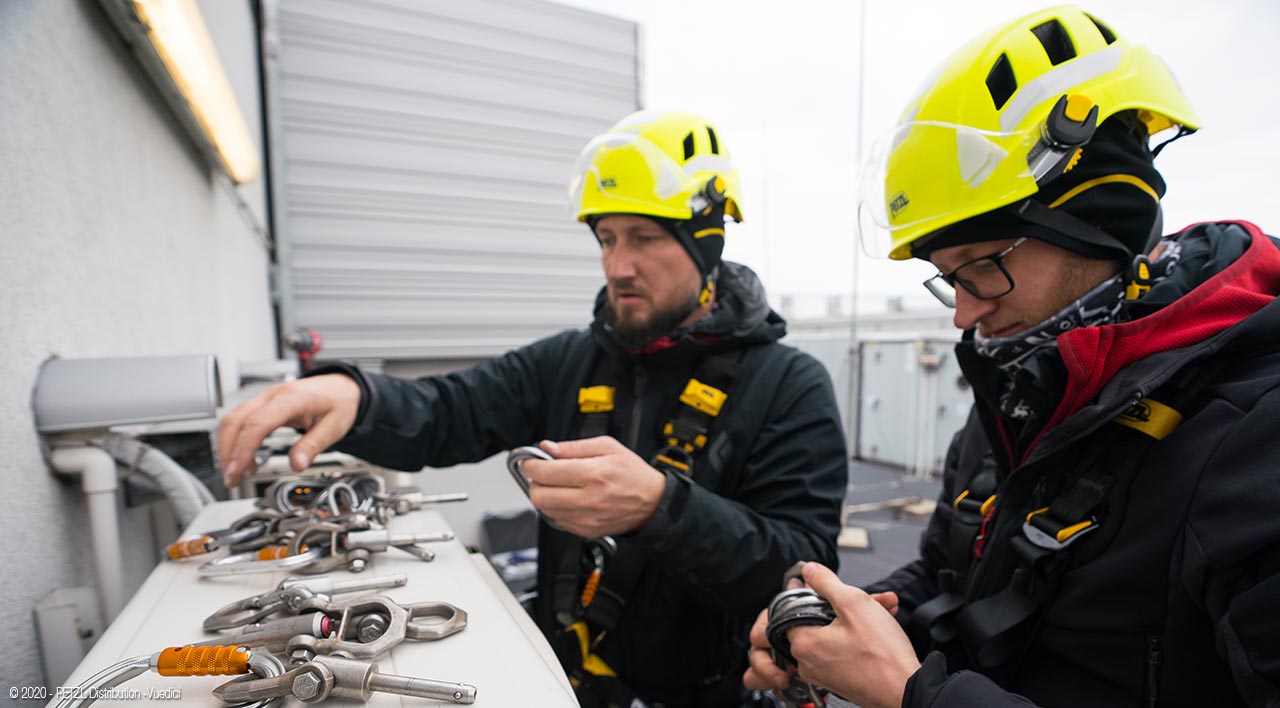When working at heights, your safety is only as reliable as the equipment you depend on. Safety servicing is a crucial part of maintaining height safety equipment, ensuring it remains in optimal condition and meets the strict standards required to prevent accidents. Without regular inspections and servicing, even the highest-quality gear can degrade over time, putting workers at significant risk.
From harnesses and fall arrest systems to anchor points and lanyards, every component of a height safety system requires diligent maintenance. Australian and New Zealand regulations, specifically AS/NZS 1891.4:2009, outline strict guidelines for how often equipment should be inspected, cleaned, and serviced to ensure continued compliance and safety. Ignoring these requirements not only endangers lives but can also lead to legal consequences for businesses failing to adhere to safety protocols.

Understanding the Importance of Regular Servicing
Height safety equipment is subjected to significant wear and tear, often being used in harsh environments where exposure to dust, moisture, chemicals, and UV radiation can accelerate deterioration. Over time, even minor faults can compromise the effectiveness of safety gear, which is why routine safety servicing is essential.
Servicing ensures:
- The structural integrity of equipment is maintained
- Potential faults or weak points are identified before failure occurs
- Equipment remains compliant with safety standards
- Workers can rely on their gear to perform in critical moments
Failing to service equipment regularly can lead to serious workplace accidents, injuries, or even fatalities. It is the responsibility of both employers and workers to ensure that all gear is inspected and maintained according to regulations.
Inspection Requirements Under AS/NZS 1891.4:2009
The AS/NZS 1891.4:2009 Standard provides detailed instructions on how height safety equipment should be selected, used, and maintained. According to these guidelines:
- Daily Pre-Use Checks – Before using any height safety equipment, workers must conduct a visual inspection to ensure there are no visible defects, wear, or damage. If any irregularities are found, the equipment must be immediately removed from service.
- Six-Monthly Inspections – A formal, detailed inspection must be conducted at least every six months by a qualified height safety inspector. This includes:
- Checking for wear and tear on straps, harnesses, and lanyards
- Inspecting fall arrest devices, ropes, and slings for signs of degradation
- Examining connectors, anchor points, and fittings for corrosion or weakness
- More Frequent Inspections for Harsh Environments – If height safety equipment is exposed to extreme conditions—such as high humidity, chemicals, saltwater, or excessive dirt—it must be inspected more frequently than the standard six-month cycle. In some cases, quarterly or even monthly checks may be necessary.
- Comprehensive Servicing – Certain components, like self-retracting lifelines (SRLs) and fall arrest devices, require professional servicing at intervals recommended by the manufacturer. This may include disassembly, lubrication, and testing of mechanical parts to ensure flawless operation.
- Proper Documentation – Every inspection and servicing session must be logged and documented for compliance purposes. This ensures a traceable record of maintenance and helps businesses meet their legal obligations.
Signs That Your Safety Equipment Needs Servicing
Even if your next scheduled inspection is months away, certain warning signs indicate that your height safety gear requires immediate attention:
- Frayed or cut straps – Harnesses and lanyards with visible damage must be removed from service immediately.
- Corrosion or rust – Metal components like D-rings, buckles, and carabiners should be free from corrosion, as this weakens their strength.
- Malfunctioning retractable lifelines – If a self-retracting lifeline does not engage properly or retracts too slowly, it needs servicing.
- Unusual stiffness or flexibility – Rope and webbing should maintain their original flexibility; any significant hardening or loosening can signal degradation.
- Illegible labels or markings – If safety markings or instructions are worn away, the equipment may no longer be compliant and should be checked by a professional.
Storage and Maintenance Best Practices
In addition to regular safety servicing, proper storage and handling of height safety equipment can extend its lifespan and enhance performance. Follow these best practices:
- Store equipment in a dry, clean environment – Avoid damp or high-humidity areas to prevent mould and mildew from weakening fabric components.
- Keep equipment away from chemicals and oils – Exposure to harsh substances can degrade materials over time.
- Hang harnesses and lanyards properly – Storing them in a twisted or crumpled position can cause permanent deformities.
- Avoid direct sunlight when not in use – Prolonged UV exposure can weaken straps and fabric components.
- Regularly clean equipment – Use manufacturer-approved cleaning solutions to remove dirt and contaminants without causing damage.

Why Choose Absafe Shop for Your Safety Servicing Needs?
At Absafe Shop, we understand the critical role that reliable safety equipment plays in high-risk environments. Our expert team provides professional safety servicing to ensure your height safety gear meets all industry standards and remains in peak working condition. We offer comprehensive inspections, servicing, and recertification of all height safety equipment, giving you peace of mind that your workforce is fully protected.
Don’t take chances with safety—schedule your safety servicing today to ensure compliance and keep your team secure on the job.

